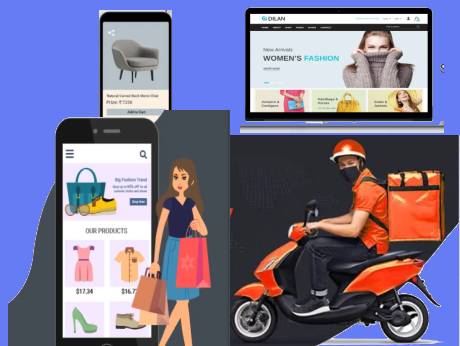
Digital channels of e-commerce have seen a big jump in 2020, with increased patronage of hyper local services, finds a study by e-business solutions and Software as a Service ( SaaS) player StoreHippo.
The company’s e-Commerce Trends report, 2020 finds:
· Digital footprints amongst the customers increased manifold in 2020
· From Kiranas to large enterprises and from grocery to pharma, a high inclination towards digital channels was observed this year
· The year also marked the adoption of Hyper-local ecommerce model in its full swing
· The growth of B2B ecommerce segment is 200% faster than B2C ecommerce
· This digital wave which is likely to dominate in 2021 as well, will also give rise to trends like agile payment gateways, integration of technologies to meet the deliveries, personalization and shift towards D2C amongst others
·Festive sales were majorly driven by tier-2 & tier-3 cities
· Many first-time buyers have been also added to the customer base of e-commerce, this year
The report states, the advancements in the digital services have given the right impetus to a host of brands to adopt the ‘Hyperlocal E-commerce Model’ in order to stay abreast in the market. With the adoption of Hyperlocal E-Commerce Model, the brands aimed at providing a real in-store experience to the customers to develop a deeper connect with them, which became the need of the hour owing to the outbreak of the pandemic.
Another most talked about trend of the year includes the active use of m-commerce. With mobile apps, customers can be easily persuaded to buy more and can be targeted better with personalized offers creating a win-win situation for the retailers. Furthermore, mobiles have remained a constant companion for the people, even when they were locked inside their homes, eventually leading them to binge shop from the safe confines of their homes. This year, about 70-80% sales were recorded through mobiles.
This year also experienced a significant growth in the online sales during the festive season. E-tailers experienced about 40-60% growth in sales this festive season, out of which the majority of sales were driven from tier-2 & tier-3 cities.
Automation has also revamped the business models of the brands, this year. Automation has made both B2B and B2C business models more streamlined, efficient, transparent and less prone to errors, which has garnered better growth for the brands. Though, the B2B ecommerce segment is growing at a 200% faster rate than the B2C ecommerce segment.
Says Rajiv Aggarwal, CEO, StoreHippo: “This digital wave which is likely to dominate in 2021 as well, will also give rise to trends like agile payment gateways, integration of technologies to meet the deliveries, personalization and shift towards D2C amongst others. 2020 has been a unique year in itself, and 2021 is yet another step into the unknown. The only thing we can say for certain is that the age of eCommerce and mCommerce is now. As the relevance of statistics changes with the dynamic global situation, this Trends Report showcases how most businesses adapted to the situation and strived to restore the growth as early as possible. Technology played the most important role and has drastically changed the user behaviour this year.”
According to IBEF, ‘The Indian E-commerce industry has been on an upward growth trajectory and is expected to surpass the US to become the second largest E-commerce market in the world by 2034. Indian e-commerce sector is poised to reach US$99 billion by 2024 from US$30 billion in 2019, expanding at a 27% CAGR, with grocery and fashion/apparel likely to be the key drivers of incremental growth. Online shoppers in India are expected to reach 220 million by 2025. Online retailers deliver to 15,000-20,000 pin codes out of nearly 100,000 pin codes in the country. In 2019, it was estimated that one in every three Indian shopped via a smartphone. The Indian online grocery market is estimated to exceed sales of about Rs. 22,500 crore (US$ 3.19 billion) in 2020, a significant jump of 76% jump over the previous year.’